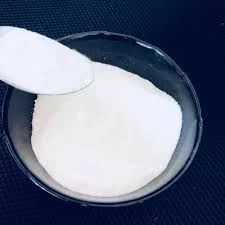
Sep . 30, 2024 06:17 Back to list
The Process of Producing Hydroxyethyl Cellulose Explained in Simple Terms
How is Hydroxyethyl Cellulose Made?
Hydroxyethyl cellulose (HEC) is a cellulose derivative that has gained significant popularity in various industries, ranging from pharmaceuticals to construction, due to its unique properties. It is a non-ionic, water-soluble polymer characterized by its thickening, gelling, and stabilizing abilities. Understanding the production process of HEC is essential for harnessing its benefits effectively, as well as ensuring quality control in its applications.
Raw Materials
The primary raw material for the production of hydroxyethyl cellulose is cellulose, which is naturally abundant and commonly sourced from wood pulp or cotton. The cellulose is then subjected to a series of chemical modifications to produce HEC. The key chemical used in the modification process is ethylene oxide. The choice of ethylene oxide is crucial, as it reacts with the hydroxyl groups present in cellulose to form hydroxyethyl groups, subsequently leading to the production of HEC.
The Production Process
The production of hydroxyethyl cellulose typically involves several steps
1. Preparation of Cellulose The cellulose is first purified and subjected to a pre-treatment process to remove any impurities. This may include bleaching or mechanical disintegration, which helps to enhance the reactivity of cellulose.
2. Alkalization The purified cellulose is then treated with an alkaline solution, often sodium hydroxide (NaOH). This step is essential as it swells the cellulose fibers and increases the availability of hydroxyl groups for subsequent reactions. The alkalization process transforms the crystalline structure of cellulose into a more amorphous structure, making it more reactive.
3. Etherification After alkalization, the modified cellulose is reacted with ethylene oxide in a controlled environment. This reaction occurs at specific temperatures and pressures, allowing for controlled substitution of hydroxyethyl groups onto the cellulose backbone. The degree of substitution (DS) – which indicates the average number of hydroxyethyl groups per anhydroglucose unit of cellulose – can be carefully controlled during this step to tailor the properties of the final hydroxyethyl cellulose product.
how is hydroxyethyl cellulose made

4. Neutralization Following the etherification reaction, the product is neutralized to stop the reaction. This is typically achieved by using a dilute acid, such as hydrochloric acid, to remove any residual alkaline substance. Neutralization not only halts the reaction but also prepares the product for subsequent purification.
5. Purification and Drying The hydroxyethyl cellulose is then purified to eliminate unreacted materials, residual reagents, and by-products. This may involve washing steps, followed by drying processes to achieve the desired moisture content. Depending on the intended application, HEC might be offered in various forms, including powder or solution.
6. Quality Control The final step in the production of hydroxyethyl cellulose involves thorough quality control and testing. It is essential to evaluate several parameters, including viscosity, purity, and the degree of substitution, to ensure that the product meets industry standards and is suitable for its intended use.
Applications of Hydroxyethyl Cellulose
Once produced, hydroxyethyl cellulose finds use in a vast array of applications. In the pharmaceutical industry, HEC serves as a thickening agent in topical formulations and as a stabilizer in drug delivery systems. Its water-retaining properties make it invaluable in cosmetic products, where it enhances the feel and texture of creams and lotions.
In construction, HEC is used as an additive in cement, plaster, and paint applications, where it improves workability and adhesion. Additionally, HEC serves an essential role in the food industry as a thickener and stabilizer in various food products, contributing to texture and consistency.
Conclusion
The production of hydroxyethyl cellulose is a complex yet fascinating process that transforms natural cellulose into a versatile compound with numerous applications. From controlling the conditions during etherification to ensuring strict quality control, each step is critical in determining the properties and functionality of the final product. As industries continue to seek sustainable and effective solutions for their needs, the demand for hydroxyethyl cellulose is likely to grow, reflecting its importance in modern manufacturing and product formulation.
-
Versatile Hpmc Uses in Different Industries
NewsJun.19,2025
-
Redispersible Powder's Role in Enhancing Durability of Construction Products
NewsJun.19,2025
-
Hydroxyethyl Cellulose Applications Driving Green Industrial Processes
NewsJun.19,2025
-
Exploring Different Redispersible Polymer Powder
NewsJun.19,2025
-
Choosing the Right Mortar Bonding Agent
NewsJun.19,2025
-
Applications and Significance of China Hpmc in Modern Industries
NewsJun.19,2025







